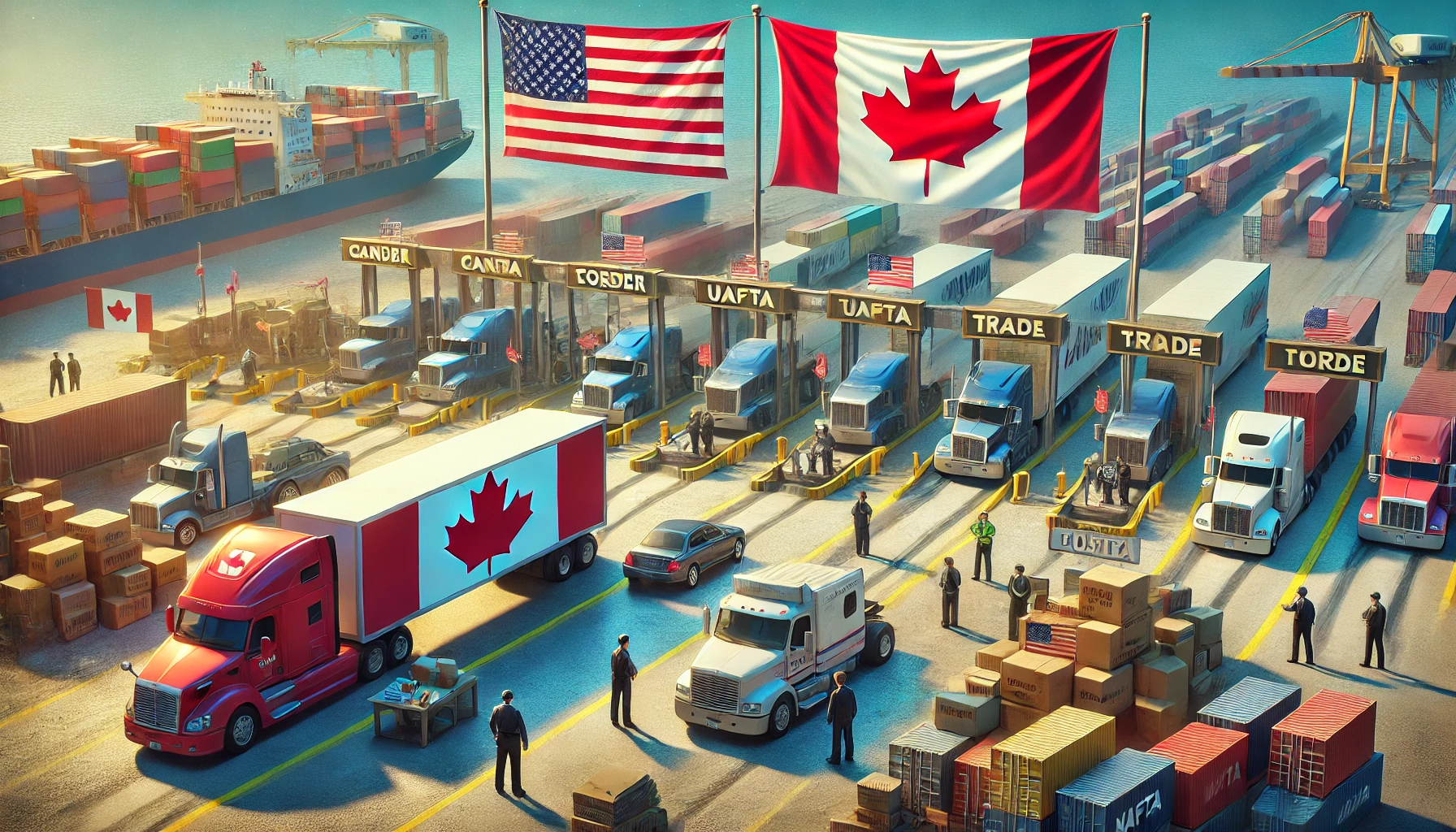Physical Address
304 North Cardinal St.
Dorchester Center, MA 02124
Physical Address
304 North Cardinal St.
Dorchester Center, MA 02124

Discover the history of Canadian tariffs on U.S. goods, from protectionist policies in the 19th century to modern trade agreements like NAFTA and USMCA. Learn how Canada’s tariff policies evolved, how agricultural products like dairy, poultry, and eggs were impacted, and why Canada imposed 25% retaliatory tariffs in 2025 in response to U.S. trade actions.
A tariff is a tax or duty imposed by a country on imported goods to regulate trade and protect domestic industries. The history of Canadian tariffs on U.S. goods reflects a dynamic economic relationship shaped by protectionist policies, trade agreements, and geopolitical shifts. Canada’s approach to tariffs has undergone significant transformations over time:
Before 1854, Canadian tariffs on U.S. goods were largely protectionist, influenced by British colonial policies. Canada operated under a dual tariff system:
For U.S. goods, the combined tariff rates likely ranged between 5% and 20%, depending on the type of product. The exact imperial tariffs remain unclear due to limited archival records, but they contributed to higher costs for American imports into Canada.
A significant shift occurred with the Canadian-American Reciprocity Treaty of 1854, which allowed duty-free trade on specific raw materials and agricultural products. Under this agreement:
This duty-free period ended in 1866 when the U.S. opted not to renew the treaty, leading to the re-imposition of tariffs and renewed protectionism.
After the termination of the Reciprocity Treaty, Canada reintroduced tariffs on U.S. imports, culminating in Prime Minister John A. Macdonald’s National Policy of 1879. This policy:
For over a century, these protective tariffs shaped Canada’s industrial development, ensuring domestic industries thrived despite limited international competition.
By the late 20th century, global trade liberalization gained momentum. Canada and the U.S. pursued closer economic integration through:
Under NAFTA:
NAFTA was replaced by the United States-Mexico-Canada Agreement (USMCA) in 2020, maintaining duty-free trade for most goods while retaining some agricultural protections. The agreement continued:
During 1994-2018 under NAFTA, tariffs were mostly zero, with exceptions for agriculture, becoming duty-free by 1998 for most goods, but with quotas for dairy, poultry, and eggs. Under USMCA (2019-2024), tariffs continued to be mostly zero, with some agricultural tariffs under supply management, maintaining specific tariffs for these sectors.
The U.S. goods Canada applied tariffs to were primarily dairy, poultry, eggs, and sugar, with high out-of-quota tariff rates, such as approximately 250% for dairy products, applied when imports exceeded quota limits.
The net revenue to Canada from tariffs on these U.S. goods, while the U.S. did not collect similar tariffs on Canadian goods, is the revenue from out-of-quota imports. However, evidence leans toward U.S. exports rarely exceeding these quotas, suggesting minimal revenue, though exact figures require specific import data not readily available here. NAFTA was replaced by the United States-Mexico-Canada Agreement (USMCA) in 2020, maintaining duty-free trade for most goods while retaining some agricultural protections. The agreement continued:
While USMCA upheld free trade principles, economic tensions persisted, particularly regarding U.S. tariffs on Canadian steel and aluminum.
In response to U.S. President Donald Trump’s imposition of 25% tariffs on Canadian goods, Canada retaliated with its own tariffs. On February 4, 2025, Canada implemented:
These tariffs reflected an escalation in trade tensions, disrupting established free trade frameworks.
The retaliatory measures:
During both NAFTA (1994-2018) and USMCA (2019-2024), Canada applied tariffs primarily to agricultural products under supply management:
These tariffs were applied only to quantities exceeding the quota, a key issue in U.S.-Canada trade disputes. Canada’s TRQ system allowed duty-free imports up to a specific limit, after which high tariffs applied. Despite these policies, U.S. exports rarely exceeded quotas, limiting Canada’s revenue from these tariffs. The retaliatory measures:
| Period | Tariff Rates on U.S. Goods | Notes |
|---|---|---|
| Pre-1854 | Likely 5%-20% (colonial + imperial tariffs) | Protectionist policies dominated. |
| 1854-1866 (Reciprocity Treaty) | Zero for specific goods (raw materials, agriculture) | Treaty fostered duty-free trade. |
| Post-1866-1879 | Varied, increased with protectionism | Tariffs reinstated after treaty ended. |
| 1879-1989 (National Policy to CUSFTA) | High protective rates, specifics varied by product | Aimed at protecting domestic industries. |
| 1989-1994 (CUSFTA) | Gradual reduction, mostly eliminated by 1994 | Paved the way for NAFTA. |
| 1994-2018 (NAFTA) | Mostly zero, exceptions for agriculture | Duty-free trade achieved by 1998. |
| 2019-2024 (USMCA) | Mostly zero, some agricultural tariffs | Continued tariff eliminations with limited exceptions. |
| Early 2025 (Retaliatory) | 25% on certain goods (C$30 billion) | Response to U.S. tariffs on Canadian exports. |
The history of Canadian tariffs on U.S. goods reflects an evolution from protectionist policies in the 19th century to modern free trade agreements like NAFTA and USMCA. While most tariffs were eliminated by the late 20th century, 2025’s retaliatory tariffs underscored the fragility of trade relations amid shifting economic policies. As Canada and the U.S. navigate trade tensions, historical patterns highlight the cyclical nature of tariff disputes and economic cooperation. Understanding these trends is essential for businesses, policymakers, and trade analysts assessing the future of North American trade.